Are Massage Guns Really Helpful?
If you are serious about training recovery, you have noticed the rise of a new trend; massage guns. This high-tech tool is a way to prioritize healing, control aches and pains, and help relax tight muscles after a hard workout. This post will explain how exactly the gadget works, how to use it, and what to avoid. Let’s get pulsing.
Vibration vs Percussion Massage Guns
Massage guns typically fall into two categories; vibration or percussive, also called percussion. The difference between these types is the frequency (the number of pulses or strokes per minute) and amplitude (how deep the gun reaches into your soft tissue). For example, a gun with a frequency of 2,000 strokes per minute travels faster than 1,740 strokes per minute, and a gun with an amplitude of 16mm will be “punchier” or travel deeper into the muscle than a gun with an amplitude of 10mm. Vibration guns have a higher frequency and lower amplitude versus percussive guns, which have a lower frequency and higher amplitude.
It is a personal choice and depends on how you will use the tool if you want a luxurious or rigorous treatment. No matter your style, they work similarly to relax the muscles, so let’s get into how they work.
Stimulating Nerves to Relax Your Muscles
A massage gun works by overstimulating the nerves to stop them from sending pain signals to your brain so we can work on the muscles to help them relax and release. It aims to sort of ‘trick’ the nervous system into blocking pain by massaging at a particular frequency. The different nozzle attachments pulsate, increasing blood flow to your muscles and releasing tension and lactic acid (a byproduct that builds up in the muscles during a strenuous workout).
Delivering vibration to your muscles, fascia, skin, and tissues changes how the body communicates with the brain, breaking up pain and soreness and helping to decrease it mainly in the short term.
How to Use Massage Guns
Massage guns are relatively easy to use; you point them at the target and let it do its work. Hold it about an inch away from your skin when you start it up, floating the head along the muscle you want to loosen or warm up. There’s no need to press hard, as the pulsing of the gun back and forth on the desired power setting will do the work. Depending on the body part you are applying to, it may be easier if you have a partner to help you get the hard-to-reach places, like shoulders and back, but you should be able to do 80% of the body. Testing the varying speeds and which gun head works best on each muscle group may take some trial and error.
Because it heightens blood flow to your muscles, it can be used after a workout for recovery or before the activity to turn on the sympathetic nervous system preparing the body for movement. Some athletes use it to warm up cold muscles before a late-night hockey game. If your legs are sore after a workout, use the massage gun to loosen things up, lingering on specific areas and enjoying the benefits of the massage. The pulsing action of the gun helps to get your muscles out of the soreness and pain cycle, helping to restore movement capabilities so you can get back to training and performing.
You can also target your usage depending on your workout regime. For example, if you’re running, you can focus on the gluteus maximus, inner and outer thigh, quads, hamstrings and calves. For strength training and weight lifting, target the glutes, hamstrings, and rectus femoris (one of the muscles contributing to hip flexion). By working on the muscles that help with hip flexion, you can limit excessive anterior pelvic tilt (where the pelvis tilts forward, arching your lower back), which happens because of tight hip flexors. The massage gun can help beginners avoid lower back injuries, and advanced trainers lift increasingly heavy loads with the correct posture.
What to Avoid
If you use a foam roller or lacrosse ball or do any soft tissue mobilization, you know there is some discomfort as you roll out sore muscles, but you don’t want it to feel like it’s causing damage. Similarly, you don’t want to use the tool in a way that causes further harm. It is best to gradually increase the intensity of the massage gun, monitoring for any significant discomfort. Other tips on how to use it safely include:
- Do not move the gun toward the joint or on bony areas; stay on the thickest part of the muscle.
- Pay attention to any pain and irritation. Stop using it if you have to.
- Do not use it on broken skin, which can cause further irritation.
- Avoid any areas of injury, torn muscle, swelling, and pain.
- Consult a doctor before you use it if you are pregnant, have a pacemaker, or are on blood thinners to learn about any potential risks.
Massage guns are a high-tech, powerful recovery tool that fitness experts and gym goers have been adding to their repertoire. With regular usage, they have noticed a difference in their recovery, and it is easy to use on yourself when you cannot get out for a massage. It is more of a passive recovery to be done while watching TV or relaxing without getting on the floor. Depending on the model you purchase, they can be costly and unnecessary but helpful if you’re serious about recovery. Make sure you also do everything else you can for recovery, including drinking water, sleeping, eating the right food, and moving for active recovery. Massage guns are only one tool in your toolbox, so remember to focus on the basics to regain your movement capabilities and move freely again.





